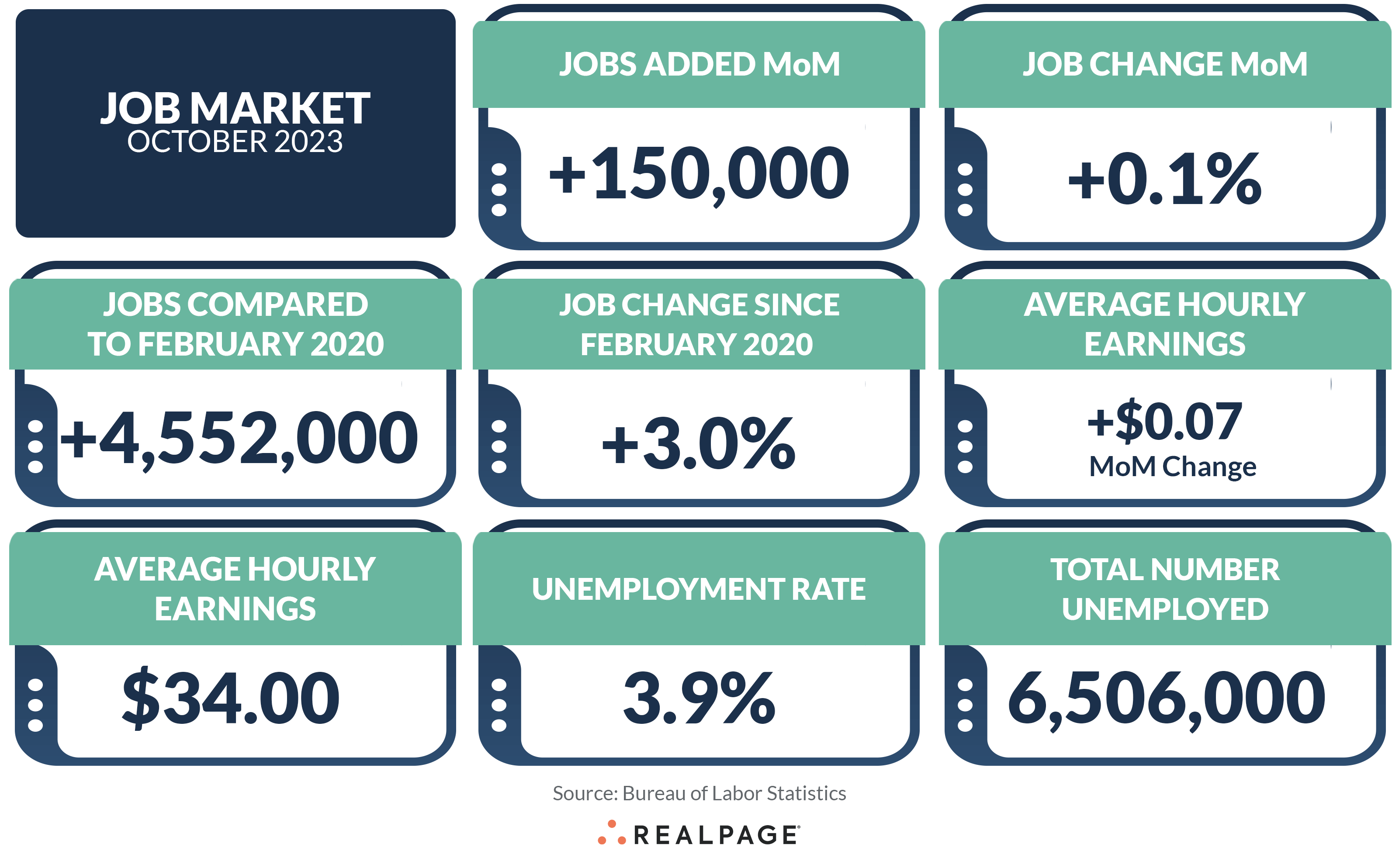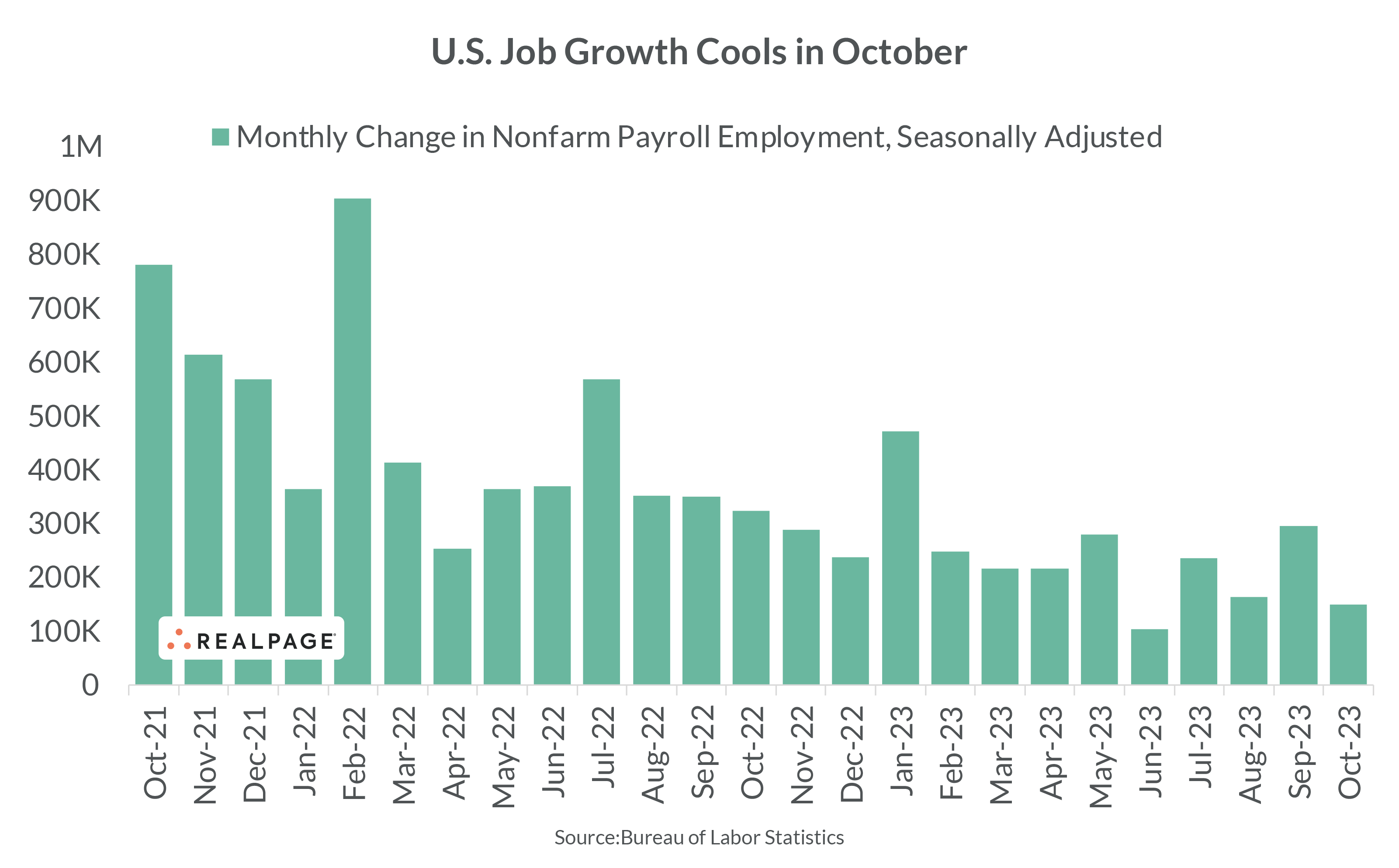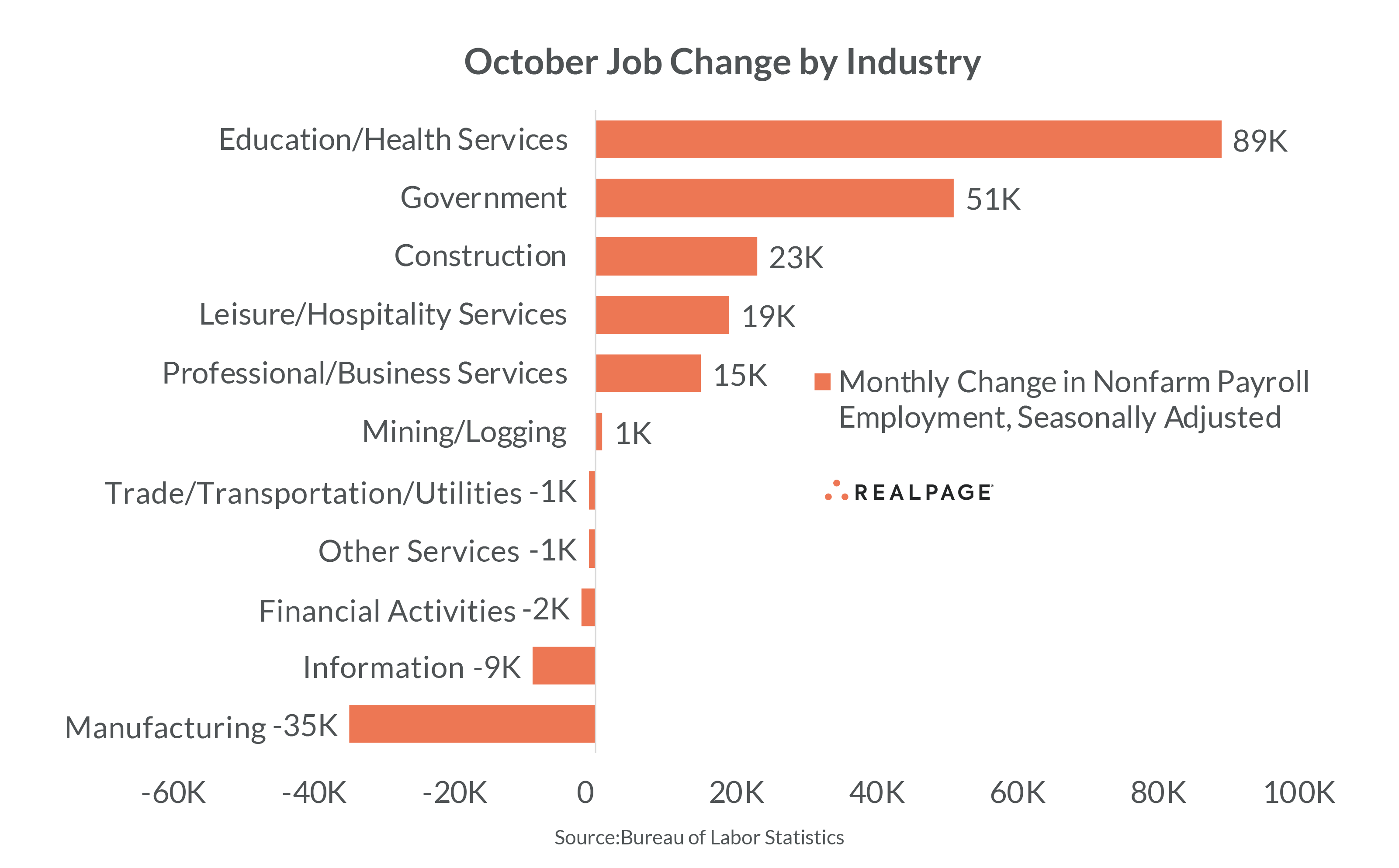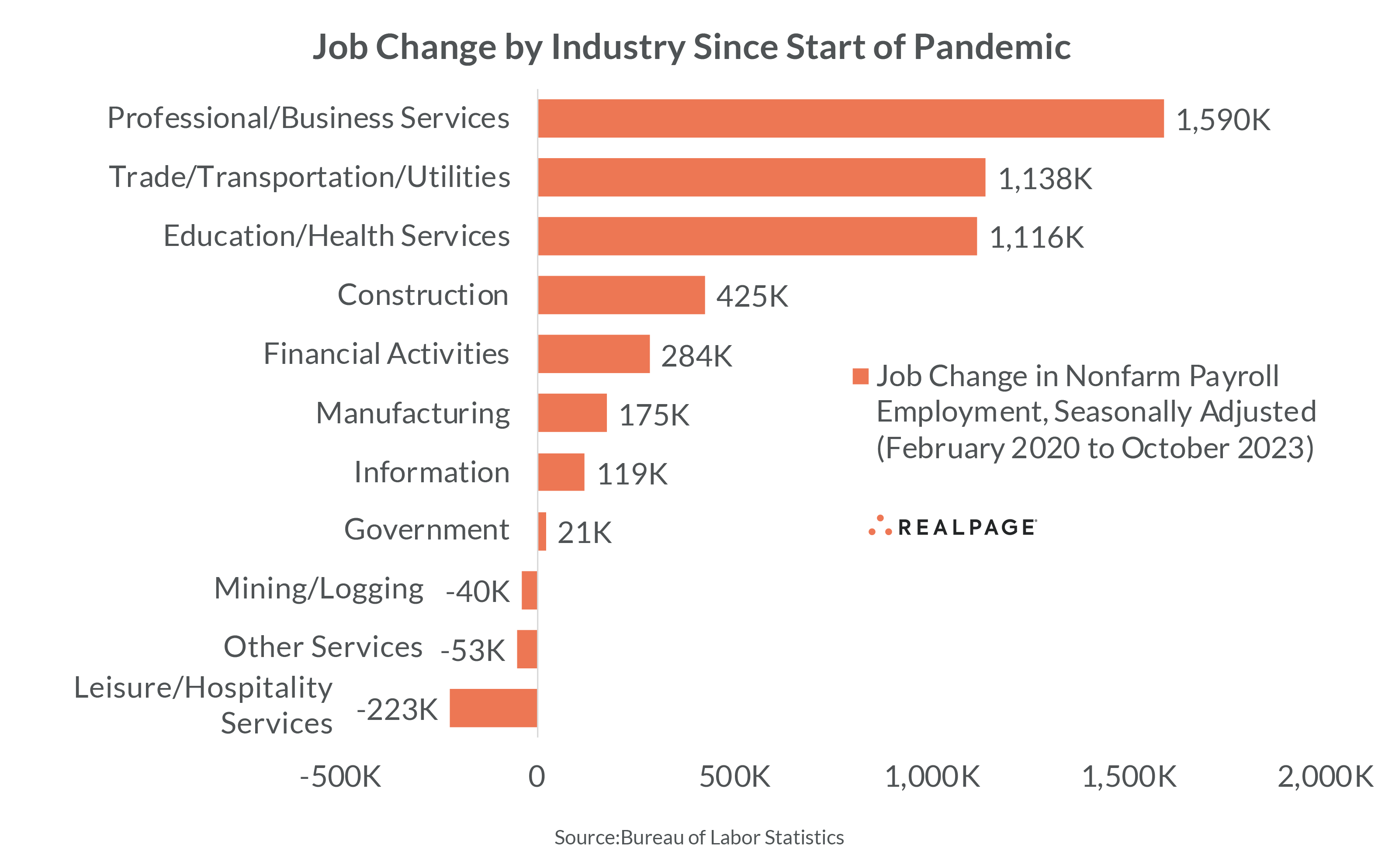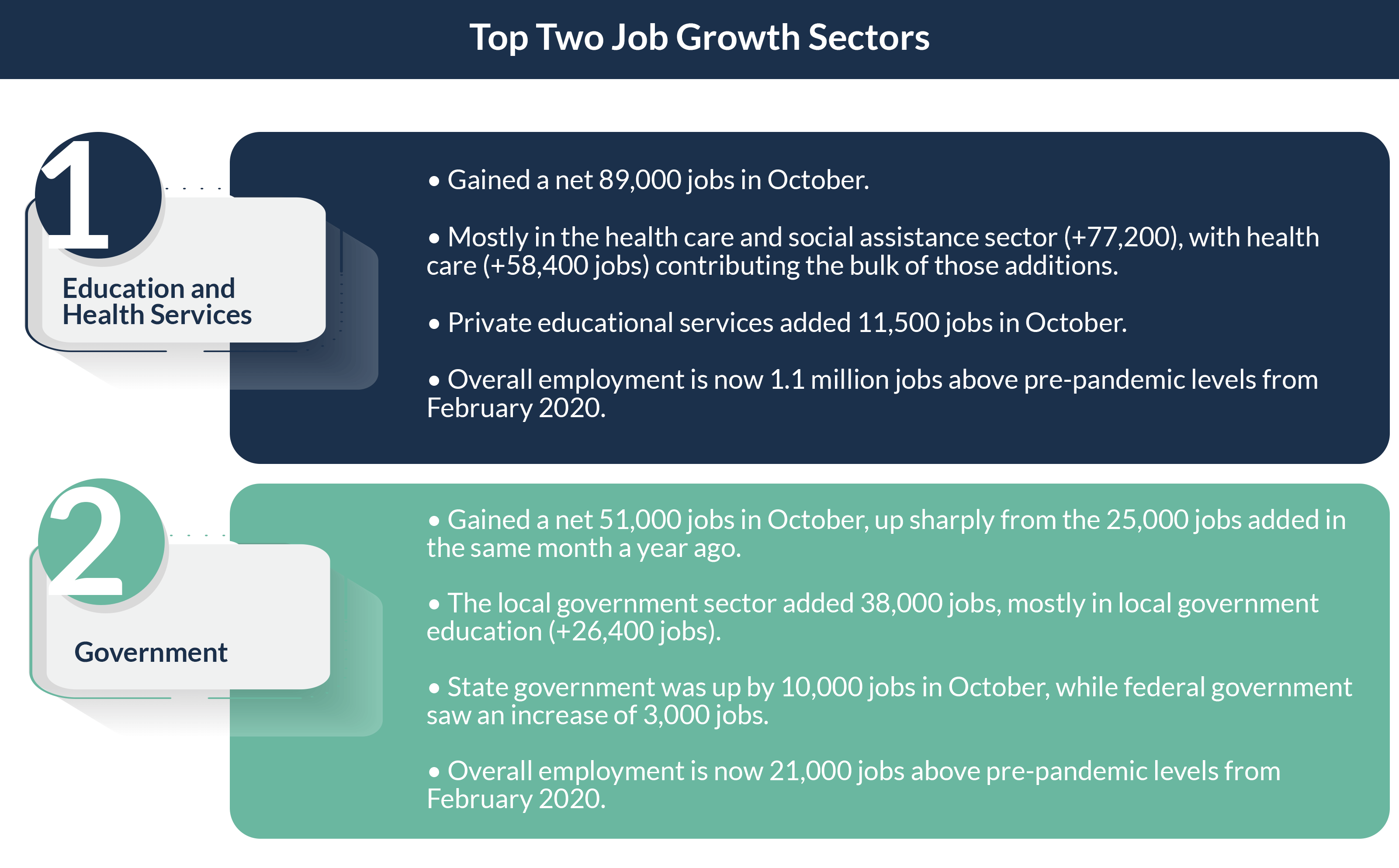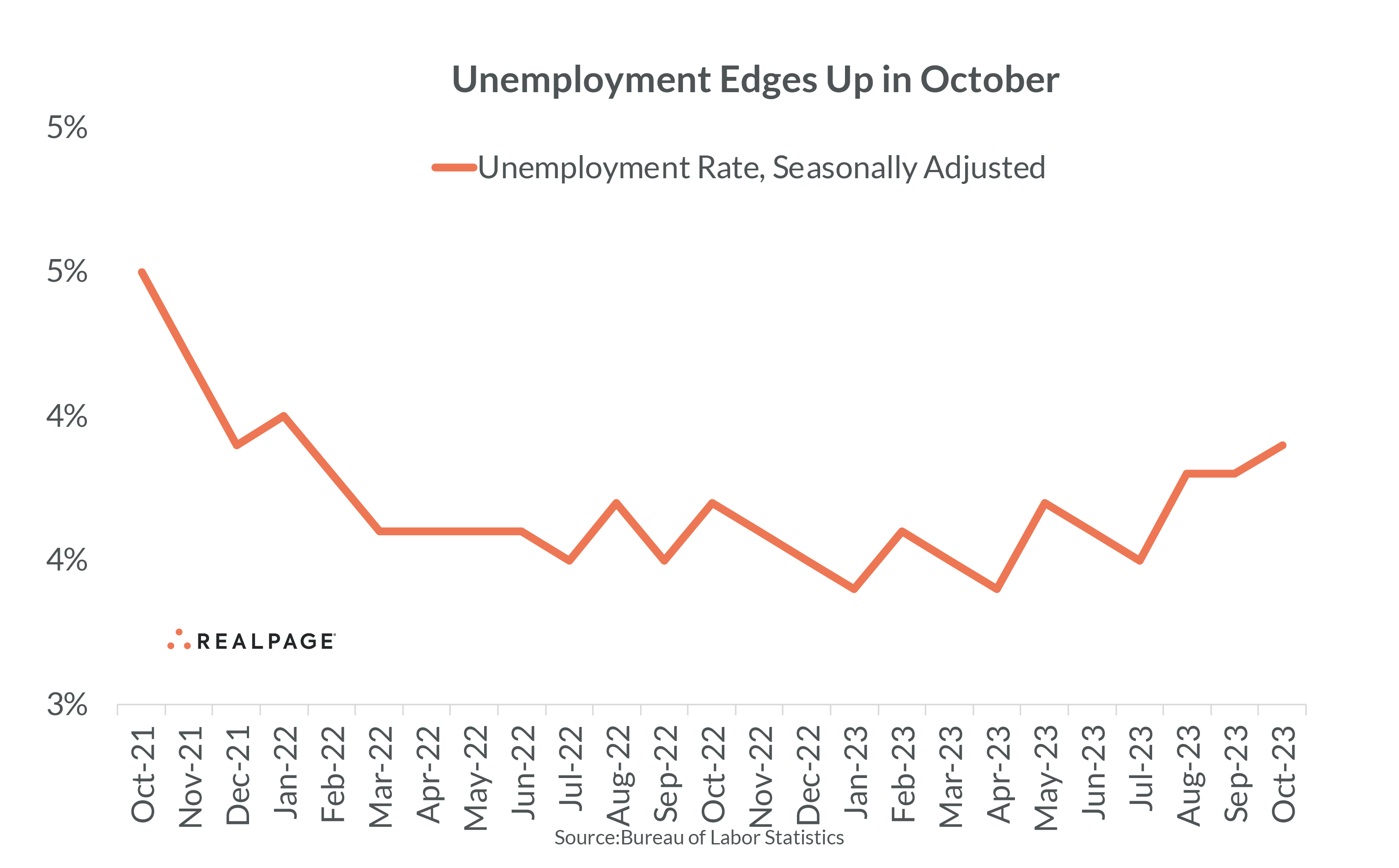U.S. employers added fewer jobs than expected in October, while the unemployment rate edged up. Despite the recent cooling, job growth remains resilient, and the unemployment rate remains low by historical standards.
Employers added roughly 150,000 employees to payrolls in October 2023, according to the Bureau of Labor Statistics (BLS). That was the weakest month-over-month gain since June 2023 and about half September’s gain of 297,000 jobs. Furthermore, that recent job gain was below what economists were projecting (+180,000 jobs).
Of note: The job counts for August and September were revised considerably lower. Downward revisions to August 2023 data showed 62,000 fewer jobs were added than previously reported, down to 165,000 positions. The September 2023 growth number was also revised down, decreasing by 39,000 jobs to a total of 297,000 positions. With these revisions, employment gains in August and September combined were 101,000 jobs lower than previously reported.
Recent job gains were well below the monthly average of around 399,000 jobs added in 2022 and below pre-pandemic norms. From 2015 to 2019, the U.S. economy added an average of roughly 190,000 jobs each month.
On an annual basis, the nation gained more than 2.9 million jobs in October 2023. Although that was the weakest annual gain since March 2021, it was above the average of around 2.4 million jobs added annually from 2015 to 2019.
The U.S. economy has recovered all the net jobs lost during the COVID-19 pandemic. As of October, the nation had nearly 4.6 million more jobs (+3%) compared to the pre-pandemic employment level from February 2020.
Jobs by Industry
Job growth in October was seen in six of 11 major industry sectors. The most notable job base expansion was in the Education and Health Services sector (+89,000 jobs). Solid gains were also recorded in Government (+51,000 jobs), Construction (+23,000 jobs), Leisure and Hospitality Services (+19,000 jobs) and Professional and Business Services (+15,000 jobs). A small job gain was seen in the Mining and Logging segment (+1,000 jobs).
Of the five major industries that lost jobs from September to October, the biggest loss of 35,000 jobs was in the Manufacturing industry. That job loss was primarily due to shrinking employment in the motor vehicles and parts segment (-33,200 jobs), reflecting the impact of auto worker strikes (United Auto Workers union). The Information sector also suffered sizable losses (-9,000 jobs). The motion picture and sound recording industries (-5,400 jobs) contributed notably to that net loss as actors (SAG-AFTRA union) remained on strike.
Most major industries have recovered all the jobs lost during the COVID-19 pandemic downturn. Professional and Business Services has seen the best recovery, with the recent job count coming in roughly 1.59 million positions ahead of February 2020 numbers. Also well ahead of pre-pandemic norms are Trade, Transportation and Utilities (+1.14 million jobs) and Education and Health Services (+1.12 million jobs).
Alternatively, some of the harder-hit sectors remain below pre-pandemic job counts. Despite recent gains, employment in the Leisure and Hospitality Services sector is still well below pre-pandemic employment counts (-223,000 jobs). Other industry sectors yet to recover all the jobs lost during the COVID-19 downturn include Other Services (-63,000 jobs) and Mining and Logging (-40,000 jobs).
Unemployment
The unemployment rate (U3 or headline unemployment rate, which is seasonally adjusted) ticked up 10 basis points (bps) in October, with the rate clocking in at 3.9%. Although that was the highest rate since January 2022, it marked the 21st consecutive month that the unemployment rate has remained below 4%.
Since February 2022, the unemployment rate has been in a narrow range of 3.4% to 3.9%. At the onset of the pandemic, the unemployment rate climbed to 14.7% in April 2020. Prior to the pandemic, the unemployment rate clocked in at 3.5% to 5.7% from 2015 to 2019, averaging 4.4% during that period. Prior to 2023, the unemployment rate hadn’t registered below 3.5% since 1969.
The total number of unemployed persons in the U.S. registered at roughly 6.51 million in October, up from about 6.36 million in September.
The unemployment rate for adult men (20 years and over) decreased 10 bps from September to October, falling to 3.7%. The unemployment rate for adult women (20 years and older) increased 20 bps to 3.3%. Meanwhile, the unemployment rate for teenagers (16 to 19-year-olds) climbed 160 bps from 11.6% in September to 13.2% in October.
Average Hourly Earnings
Average hourly earnings among employees on private nonfarm payrolls rose $0.07 (+0.2%) from September to October. That monthly increase took average hourly earnings to $34.00 in October. On an annual basis, average hourly earnings were up $1.34, a 4.1% increase year-over-year. Overall wage growth is now surpassing rising prices, as the Consumer Price Index (CPI) rose 3.7% in the year-ending September. The Fed’s target for inflation is currently at 2%.
Wage growth over the past year was strong across most major industries. The largest increases in earnings from October 2022 to October 2023 were recorded among workers in Mining and Logging (6%), Financial Activities (5.1%), Construction (5%), Manufacturing (4.8%), Leisure and Hospitality Services (4.5%), Professional and Business Services (4.5%) and Trade, Transportation and Utilities (4.4%). The smallest increases were among employees in the Information sector (1.4%), Education and Health Services (3%) and Other Services (4%).








